National Air and Space Museum to Temporarily Close March 2022 to Finish Brand New Galleries
The National Air and Space Museum will temporarily close on March 28, 2022. When it reopens in fall 2022, it will reopen with eight new galleries.
/https://tf-cmsv2-smithsonianmag-media.s3.amazonaws.com/filer_public/76/25/7625a8a8-e292-4aca-b9c8-2ba2e7ec1bc8/nasm2021-06115-2.jpg)
This week, we announced that the National Air and Space Museum location on the National Mall in Washington, DC, will temporarily close to the public on March 28, 2022, and reopen in fall 2022. This closure will allow us to complete work on the first new galleries to reopen as part of our renovation. When our flagship building reopens in fall 2022 – stay tuned next year for the official reopening date! – it will be with eight new reimagined galleries. Some are new versions of old favorites, and some are brand-new to the museum. All will include artifacts never before on display in the DC location (including an X-wing – does it get much cooler than that?!?). At that time we will also be reopening our flagship museum store and the Albert Einstein Planetarium.
Get a sneak peek at the galleries to come below and let us know @airandspace on Twitter which exhibitions you’re looking forward to most!
Destination Moon
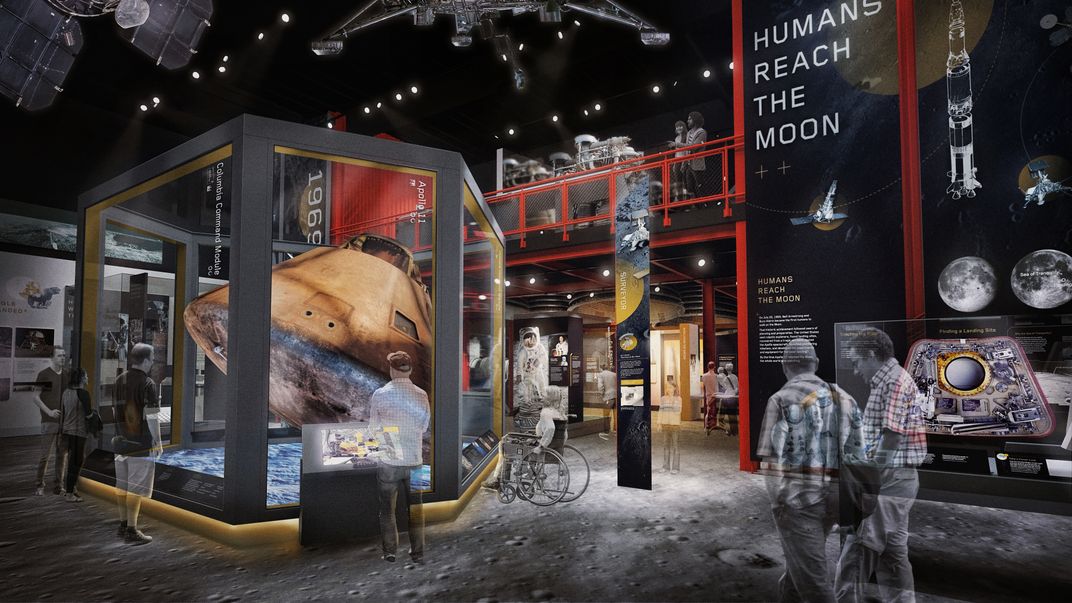
The Destination Moon exhibition is our new take on the story of lunar exploration, including the robotic and crewed space programs that led up to humanity’s first steps on the lunar surface during the Apollo program. It will introduce new generations to how, when, and why humans dreamed—then did more than dream—of exploring that beautiful disk in the night sky. It will end with what’s next for in the exploration of our only natural satellite. Destination Moon will feature iconic artifacts from our unrivaled Mercury, Gemini, and Apollo collection, including the spacesuit and Mercury spacecraft used by Alan Shepard when he became the first American in space; the Gemini IV spacecraft from which Ed White took the first American spacewalk; and Neil Armstrong’s spacesuit and the command module Columbia from the Apollo 11 mission to the Moon. Learn more.
Nation of Speed
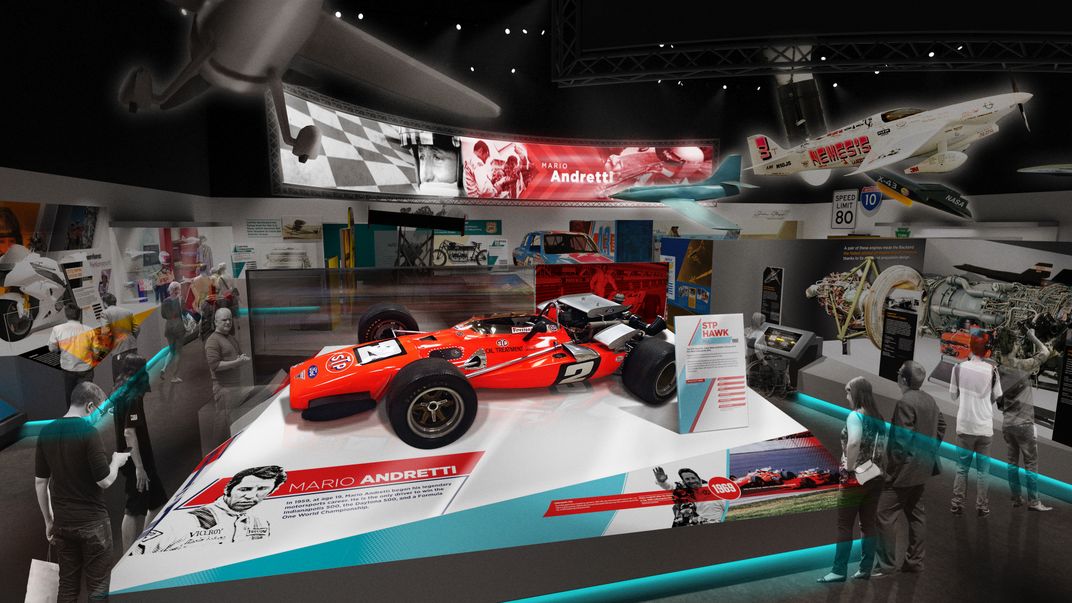
The brand-new Nation of Speed will be unlike any exhibition you’ve seen at the National Air and Space Museum (race cars and motorcycles and airplanes, oh my!). Nation of Speed will recount humankind’s desire to become the fastest on land, sea, air, and space in the pursuit of commerce, power, and prestige. The gallery will feature iconic vehicles known for going fast, including the Turner RT-14 Meteor and Sharp DR 80 Nemesis air racers, the Sonic Wind 1 rocket sled, Glenn Curtiss’s V-8 motorcycle, and Mario Andretti’s Indy 500 winning race car. Nation of Speed will be a portrait of human ingenuity — the technology developed to propel people faster and faster— and will explore how the pursuit of speed has shaped American culture and our national identity. Learn more.
Thomas W. Haas We All Fly
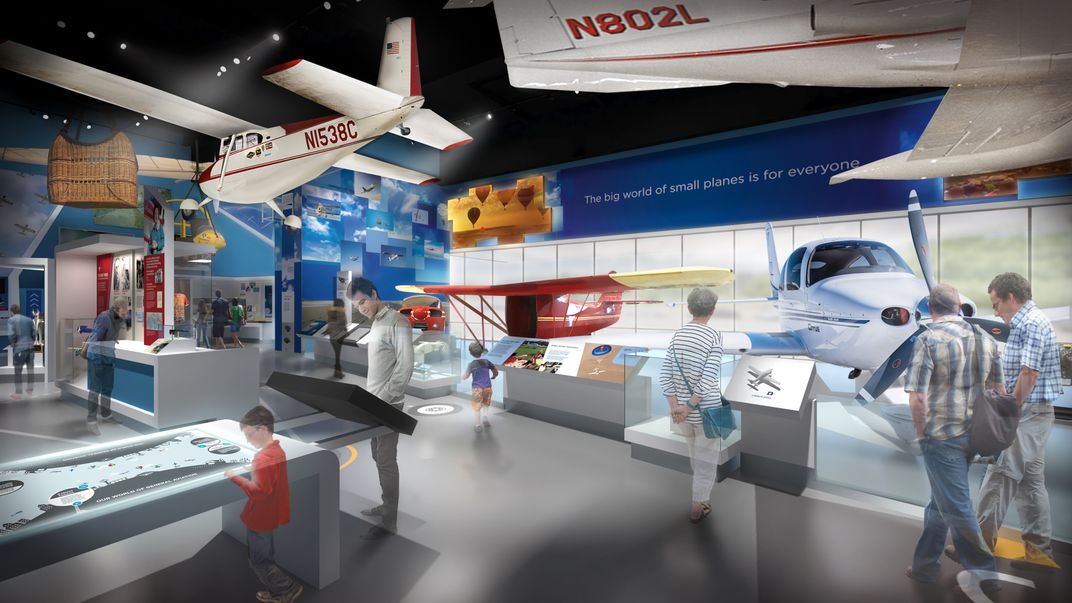
The new Thomas W. Haas We All Fly gallery will celebrate general aviation by telling the story of its many aspects in the United States and how it affects the average visitor’s daily life. The gallery will cover diverse themes, including sport, private, business, humanitarian and utility flight. The exhibition will strive to inspire the next generation of pilots—a critical need given the current U.S. pilot shortage. It will also show the diversity of career opportunities available in general aviation, beyond jobs in the cockpit. Artifact highlights include many that will be new to display at the Museum in DC, including aerobatic pilot Sean Tucker’s Challenger III biplane, Geraldine Mock’s Cessna 180 Spirit of Columbus, and a Bell Model 47B helicopter. Learn more.
America by Air
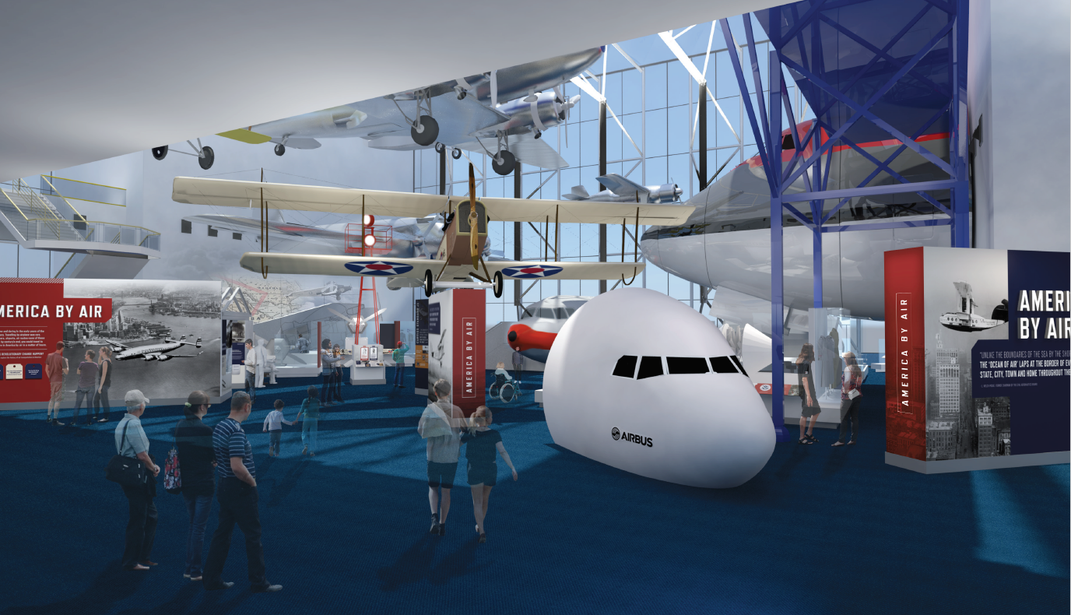
America by Air has long been a popular exhibition at the Museum in DC, and this reimagined version of the gallery will offer a new layout, improved graphics, interactives, and several new artifacts including the Lincoln-Standard H.S. and the Huff-Daland Duster. The exhibition will continue to trace the history of air transportation in the United States and explore how the federal government shaped the airline industry and how improvements in technology have revolutionized air travel, changing the flying experience. Learn more.
Kenneth C. Griffin Exploring the Planets Gallery
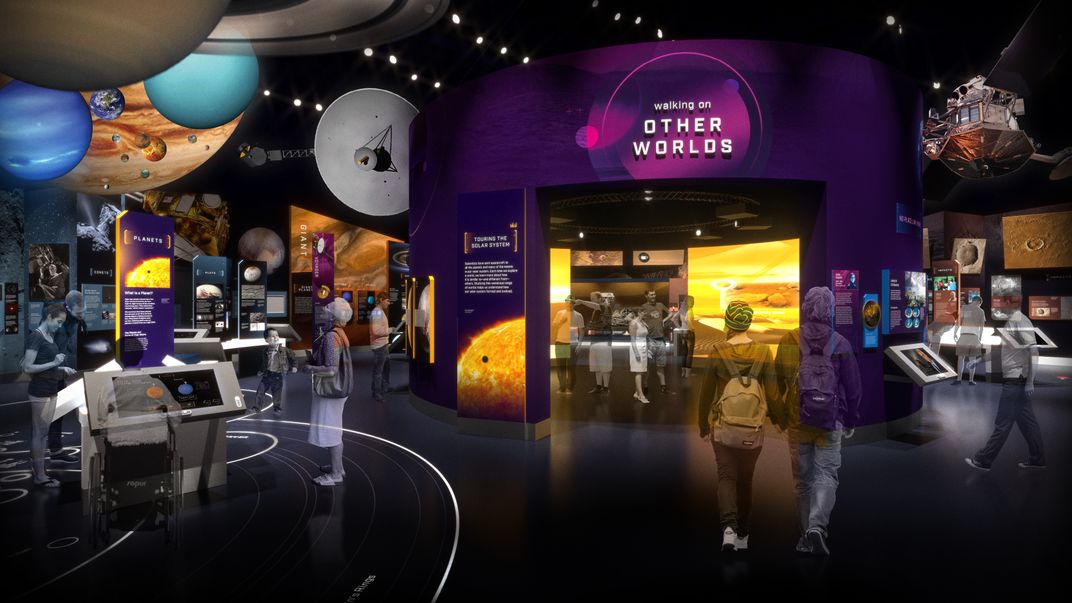
Our reimagined planetary science exhibition, the Kenneth C. Griffin Exploring the Planets Gallery, will probe the science and history of our exploration of planets and moons. The exhibition will tell the stories of the diversity of worlds circling our Sun and how exploring those worlds helps enhance our own understanding of Earth. The gallery will feature key artifacts, including a full-scale replica of the Voyager spacecraft, a model of the Messenger spacecraft, and three generations of Mars rovers. Rather than a planet-by-planet presentation from Mercury through the outer solar system, the exhibition will be organized from the outside in, emphasizing the three distinct types of worlds—small icy bodies, giant planets, and rocky planets. Learn more.
One World Connected
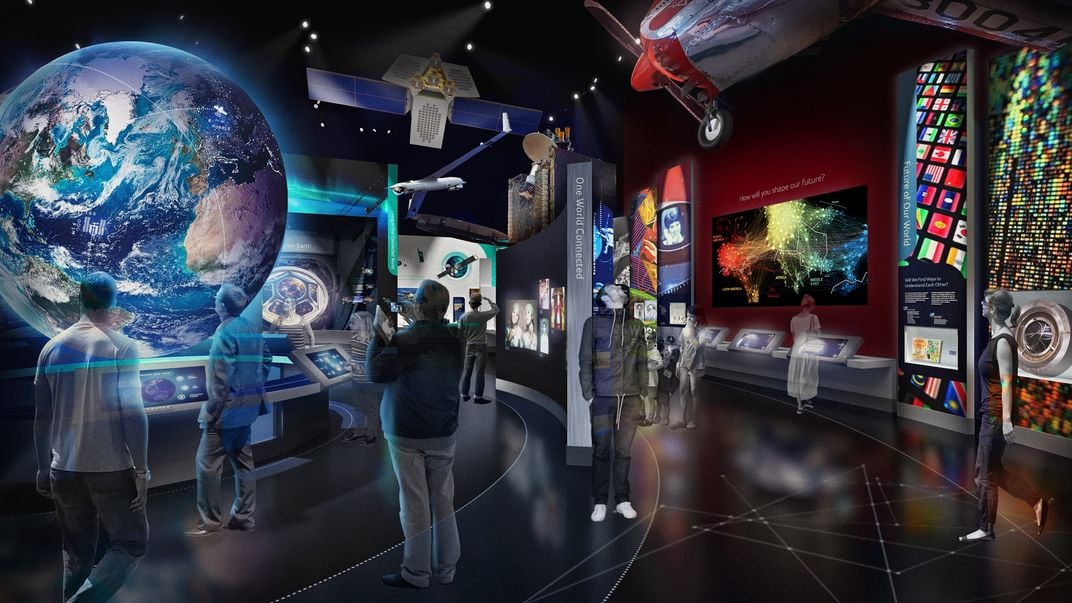
Aviation and spaceflight have transformed how Earth came to be viewed and understood as an interconnected world. The new One World Connected exhibition will tell the story of how flight fostered two momentous changes in everyday life: the ease in making connections across vast distances and a new perspective of Earth as humanity’s home. Featuring an array of satellites and other tools that have increased human connection, the exhibition will ask visitors to consider how global interconnection touches their lives and to imagine how advances in technology might impact our near-future. Learn more.
The Wright Brothers & the Invention of the Aerial Age
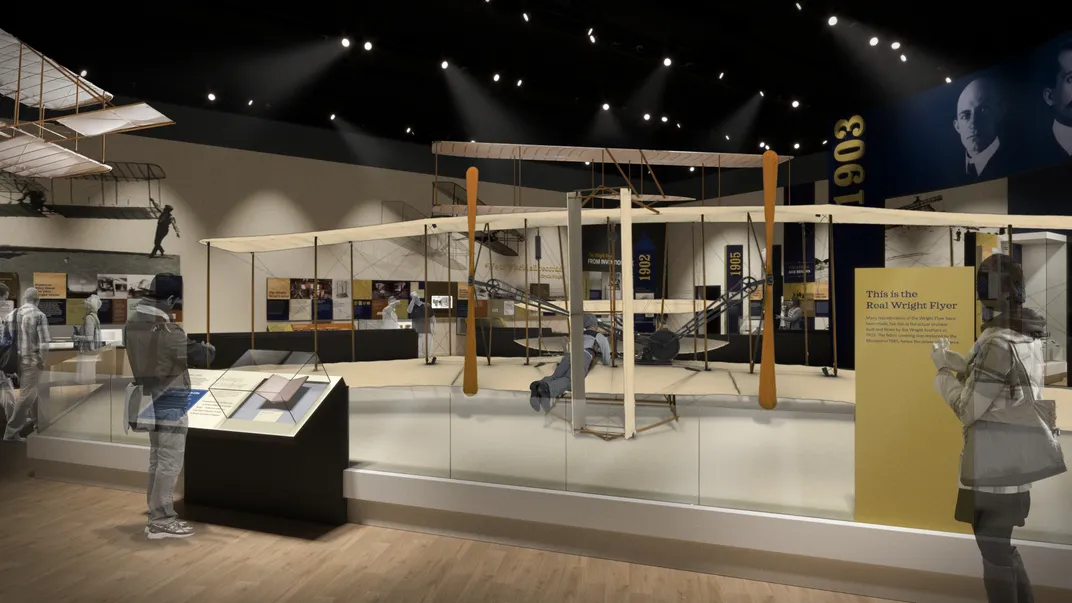
The invention of the airplane by Wilbur and Orville Wright is one of the great stories in American history. The Wright brothers’ invention not only solved a long-studied technical problem, but helped create an entirely new world. The reimagined The Wright Brothers & the Invention of the Aerial Age exhibition explores who Wilbur and Orville Wright were, what they achieved and how they did it, and how the world first reacted to their revolutionary invention. In the newly redesigned gallery, visitors will experience the Wright Flyer from only a few feet away and through digital and mechanical interactives, visitors will discover new ways of learning the basic techniques the Wrights pioneered and are still used today. Learn more.
Early Flight
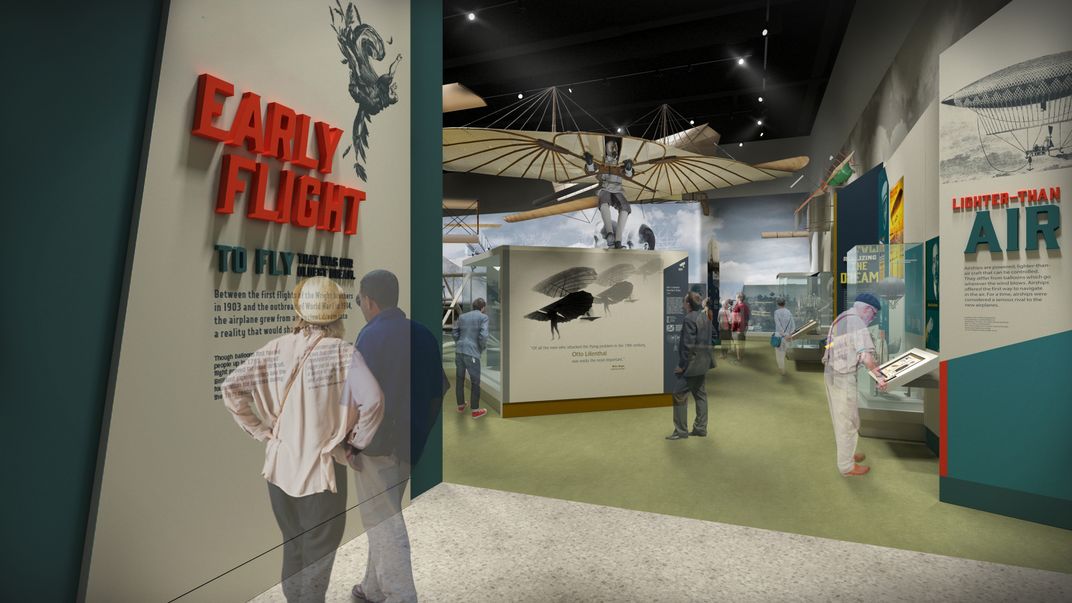
Between the first flights of the Wright brothers in 1903 and the outbreak of World War I in 1914, the airplane grew from an ancient dream into a reality that would shape the future. The reimagined Early Flight gallery will use artifacts like the Lilienthal Glider, 1909 Wright Military Flyer, and the Bleriot XI to explore how in one short decade after the Wright brothers first achieved powered flight, men and women both in America and around the world were pushing boundaries, setting records, participating in air shows, and turning the aircraft into a technology that would shape the future. Learn more.
